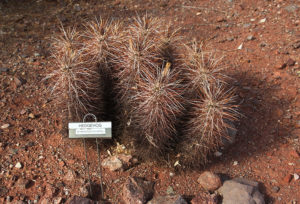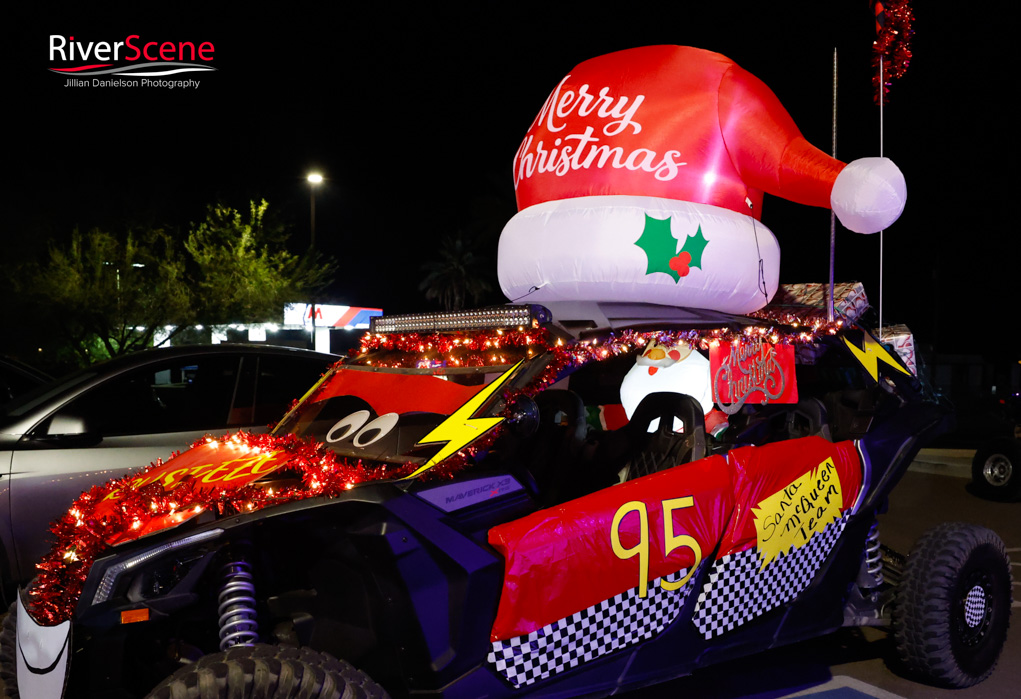The Bill Williams River National Wildlife Refuge offers excellent opportunities to see and enjoy wildlife. The Bill Williams River supports a diverse animal community. Look carefully and visitors might see some of the smallest butterflies in the world or one of the largest predators in North America.
The river that flows through the refuge gets its name from Bill Williams, a mountain man who traveled through much of Arizona in the early 1800s. Williams came west from St. Louis, serving as a missionary to Native Americans. He eventually gave up the life of a missionary and spent the rest of his life traveling the west as a trapper. The year and cause of his death remains a mystery, but legend has it he is buried in an unmarked grave somewhere on Bill Williams Mountain near Williams, Ariz.
 Unlike most rivers in Arizona, the Bill Williams runs east to west across the landscape. Ecologically, the river serves an important function as a wildlife corridor. It allows wildlife to travel across the desert landscape expanding their range and establishing new territories. For centuries it has served humans in the same way, allowing Native Americans and many others to travel across the otherwise hostile environment. Along Arizona’s rivers is where 80 percent of the state’s plant and wildlife species can be found. These riparian corridors support an incredible diversity of species.
Unlike most rivers in Arizona, the Bill Williams runs east to west across the landscape. Ecologically, the river serves an important function as a wildlife corridor. It allows wildlife to travel across the desert landscape expanding their range and establishing new territories. For centuries it has served humans in the same way, allowing Native Americans and many others to travel across the otherwise hostile environment. Along Arizona’s rivers is where 80 percent of the state’s plant and wildlife species can be found. These riparian corridors support an incredible diversity of species.
Wildlife watching, boating, fishing and hunting are popular activities on the Refuge. Stop by the Visitors Center (open Monday through Friday, 8 am – 4 p.m.) for the latest wildlife sightings and hunting and fishing regulations.
More than 340 species of birds have been documented on the Refuge, among them the yellow warbler, vermillion flycatcher and summer tanager. Bald eagles winter in the area and may be spotted hunting for fish in the river.
Also to be seen on the Refuge are javelina and deer, as well as predatory coyotes, bobcats and the less common cougars.
Just below refuge headquarters lies a cove where razorback suckers and bonytail chubs are raised. The two species are among 31 native Arizona fish, 28 of which are either endangered, threatened, or candidates for listing.
There are no developed trails at Bill Williams River NWR, but the riparian area can be seen from the gravel road that begins less than a mile northeast of refuge head-quarters and ends approximately three miles east of Highway 95. There are several pull-outs off Highway 95 that offer good views of the delta area, including a cattail marsh. Visitors are welcome to explore the rest of the refuge on foot.
From its majestic rock cliffs and ribbon cool water running through the Sonoran Desert to the cattail-filled marsh, the Bill Williams River NWR offers a little bit of everything for both wildlife and people. The refuge offers two foot trails for people looking for an opportunity to view wildlife and spend time outdoors. In addition to these trails, visitors are welcome to explore the refuge on foot. Be sure to ask refuge staff for brochures that provide information on plants and animals, specifically the refuge’s amazing birding hotspots.
Peninsula Trail (half mile): This is one of two trails near the refuge’s headquarters. The first quarter mile is paved and leads to a handicap- accessible fishing dock and restroom facilities. The trail includes interpretive and educational panels that will teach you about the wildlife and habitat found on the refuge. After the first quarter mile, the trail is unpaved and goes for another half mile (unpaved). Here you can see great views of the Bill Williams River delta. This is also an excellent location for wildlife watching, especially birds.
This is one of two trails near the refuge’s headquarters. The first quarter mile is paved and leads to a handicap- accessible fishing dock and restroom facilities. The trail includes interpretive and educational panels that will teach you about the wildlife and habitat found on the refuge. After the first quarter mile, the trail is unpaved and goes for another half mile (unpaved). Here you can see great views of the Bill Williams River delta. This is also an excellent location for wildlife watching, especially birds.
Delta Loop Trail (half mile): This nature trail is not paved, but it follows along the shoreline of the Bill Williams River delta and hills offering excellent views along the way. The trail begins at the first small shade Ramada on the paved trail and follows the lakeshore northeast leading passed a boat launch area used by canoeing and kayaking enthusiasts. Numbers on stones mark stations by the side of the path. Pick up the Nature Trails brochure for information on what those numbers represent.
Car Tour Loop
This three-and-a-half-mile car tour route is off Highway 95 on the refuge just north of the Visitors Center. Turn on Planet Ranch Road, which parallels the Bill Williams River, and prepare for a rough ride (high-clearance 4×4 vehicles recommended) and exceptional views, including one of the last flood-regenerated forests found on the lower Colorado River. You can also hike the washed-out portion of the road for a close-up look at the river’s forest and the abundant wildlife community.
The Bill Williams River delta area, including much of the cattail marsh, can be viewed from several turnouts off Arizona Highway 95. Parking is available at the 3.5 mile marker on the old Planet Ranch road.
Hunting
Hunting for dove (mourning, white-winged), Gambel’s quail and cottontail rabbit is offered on the refuge and permitted south of the Planet Ranch Road. Only shotguns are permitted for hunting dove, Gambel’s quail, and cottontail rabbit on designated areas of the refuge. In the field, hunters using a shotgun shall possess and use only nontoxic shot. Hunting for cottontail rabbits is during the dates coinciding with quail season.
Fishing
Fishing for striped, largemouth and smallmouth bass, catfish, bluegill and other fish is permitted on Lake Havasu. Lighted shoreline fishing facilities on the refuge are available for use 24 hours a day. Please use catch-and-release techniques with any native fish captured and report your catch to refuge personnel. Boating is permitted only at No Wake Speed. Water skiing and personal watercraft are prohibited.
Kayaking
Refuge visitors can launch canoes and kayaks at the non-motorized boat ramp located at the refuge visitor center near the river delta. Take in the dramatic scenery and wildlife while enjoying a 2.5 mile paddle on the Bill Williams River.
Camping is not allowed on the refuge.
There are no entrance fees for Bill Williams River National Wildlife Refuge, and no fees to use the canoe and kayak launch.
The refuge’s trails and non-motorized launch ramp are open year-round during daylight hours (sunrise to sunset) and fishing piers are open 24 hours a day. You can hike the full 6-mile length of the refuge’s river canyon, which lies beyond the parking area located 3 miles from highway 95. Before heading out, however, check with the refuge headquarters about the possibility of releases from Alamo Dam. Heavy rains can overfill Alamo Lake, and water is then released into the Bill Williams, causing the river to rise quickly.
If you visit Bill Williams River NWR by boat, please observe the no wake speed rule and cruise slowly in the middle of the river. This is to protect the fragile riparian habitat and because many backwater areas provide nesting and hiding places for birds, especially in spring and summer. Personal watercraft (PWC) such as Jet Ski™, Waverunner™, Sea Doo™, etc., are not permitted on refuge waters.
Boats can be launched from a mile below the refuge office on Parker Dam Road, at Take Off Point. Canoes, kayaks, and hand-carried boats may be launched at the Refuge headquarters during daylight hours.
The Bill Williams River NWR offers three accessible fishing structures on the peninsula adjacent to our visitor center. Fishing for striped and largemouth bass, catfish, bluegill, and others, is allowed on the refuge (all Arizona fishing regulations apply). Please use catch-and-release techniques with any native fish caught, and report catches to refuge staff.
To protect scarce desert wood, fires are not permitted on Bill Williams River NWR. Pets must be leashed and under control at all times. Keep wild things wild — all plants, animals, minerals and historic objects are protected. Disturbance or collection is prohibited except by special permit.
Refuge Headquarters/Visitor Center: Visitor center hours are from 8 a.m. to 4 p.m. Monday through Friday and 10 a.m. to 2 p.m. on weekends. The Visitor Center has an exhibit area full of information on the refuge, its history, and cultural and natural resources. Refuge staff and volunteers are available to provide you with maps, brochures, and checklists and let you know what’s happening on the refuge. The Refuge Headquarters/Visitor Center is closed on all federal holidays.
Directions:
To get to Bill Williams River NWR from Lake Havasu City, follow Arizona Highway 95 south approximately 23 miles.
To get to the Refuge Headquarters/Visitor Center: From Lake Havasu City, follow Arizona Highway 95 south approximately 17 miles. The refuge office will be on the right-hand side of the road between mileposts 160 and 162.
PS: Don’t forget a camera!

A dragon fly sits on a branch along a trail in the Bill Williams Refuge. Jillian Danielson/RiverScene

Volunteer, Roger Burt, cleans one of the docks Thursday morning in the Bill Williams Refuge. Jillian Danielson/RiverScene
For the latest stories, photos, live videos, news, and events around Lake Havasu, check out our website at riverscenemagazine.com and Facebook page at https://www.facebook.com/riverscenelive


























No Comments » Comments: